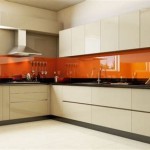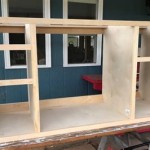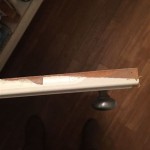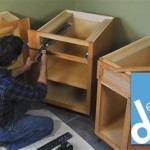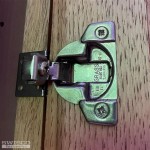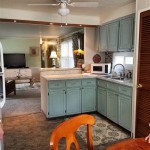Selecting the Perfect Knobs and Pulls for White Kitchen Cabinets
White kitchen cabinets represent a design staple, offering a clean, versatile canvas in any home. Their neutrality allows for a myriad of design styles, from classic and traditional to modern and minimalist. However, the selection of hardware, specifically knobs and pulls, for these cabinets is crucial to achieving the desired aesthetic. The hardware acts as jewelry for the cabinetry, dictating the overall feel of the kitchen. Choosing the right knobs and pulls involves considering not only style but also functionality, material, finish, and placement. This article will delve into key considerations for selecting knobs and pulls for white kitchen cabinets, providing a comprehensive guide to making informed decisions.
Understanding the Importance of Hardware Selection
Hardware is more than just a functional component; it is a design element that can significantly influence the overall look and feel of a kitchen. In a white kitchen, the hardware becomes even more prominent, acting as a contrasting feature that draws the eye. Incorrectly chosen hardware can detract from the beauty of the cabinets and disrupt the intended style. The size, shape, material, and finish must complement the cabinet design and the overall kitchen aesthetic. For instance, sleek, minimalist pulls in brushed nickel might enhance a modern kitchen, while ornate, antique brass knobs would be more fitting for a traditional design. The hardware also contributes to the tactile experience of using the kitchen – the feel of the knob or pull in hand adds to the overall enjoyment of the space.
Functionality is paramount; hardware should be easy to grip and use, particularly for individuals with limited hand strength or mobility. The placement of hardware also affects functionality; strategically placed pulls can make accessing cabinets and drawers more ergonomic. Therefore, the selection process should consider both aesthetic appeal and practical application.
Navigating Different Styles and Finishes
The style and finish of knobs and pulls are essential considerations that directly impact the overall design of the kitchen. A wide range of styles is available, each lending a distinct character to the space. Traditional styles often feature intricate details, curves, and embellishments. These styles are well-suited for kitchens with raised-panel cabinets and a classic aesthetic. Transitional styles offer a blend of traditional and contemporary elements, often incorporating clean lines with subtle detailing. Modern styles are characterized by their simplicity and minimalism. Common features include sleek, geometric shapes and a focus on functionality. Contemporary designs frequently incorporate materials like stainless steel, chrome, or matte black to complement the clean lines of modern cabinetry.
The finish of the hardware significantly influences its visual impact. Popular finishes for white cabinets include:
*Brushed Nickel:
Offers a warm, subtle sheen that complements both warm and cool tones. It resists fingerprints and water spots, making it a practical choice for high-use areas. *Polished Chrome:
Provides a bright, reflective surface that adds a touch of glamour. Chrome is easy to clean but can show fingerprints more readily. *Matte Black:
Creates a striking contrast against white cabinets, lending a contemporary and sophisticated look. Matte black is a durable finish that resists scratches and wear. *Brass:
Available in various shades, from polished to antique, brass adds warmth and character to a kitchen. Polished brass offers a classic, elegant look, while antique brass provides a more rustic, vintage feel. *Oil-Rubbed Bronze:
A dark, rich finish with a textured appearance, suitable for traditional or rustic kitchen designs. *Glass:
Adds a touch of elegance and can be clear or colored to complement the kitchen's color scheme. Requires careful handling due to fragility.The choice of finish should harmonize with other elements in the kitchen, such as the faucet, lighting fixtures, and appliances. Consistency in finish creates a cohesive and polished look.
Material Considerations for Durability and Aesthetics
The material composition of knobs and pulls influences both their durability and aesthetic appeal. Several materials are commonly used in hardware manufacturing, each with its unique properties.
*Metal:
Metal hardware is typically made from materials like zinc, brass, stainless steel, or iron. Zinc is a cost-effective option that offers good durability. Brass is a more premium material known for its corrosion resistance and elegant appearance. Stainless steel is highly durable and resistant to rust, making it an excellent choice for kitchens. Iron hardware provides a rustic, heavy-duty feel and is often used in farmhouse or industrial-style kitchens. *Glass:
Glass knobs and pulls add a touch of sophistication and elegance. They can be clear, frosted, or colored and may incorporate decorative elements like facets or engravings. Glass hardware requires careful handling due to its fragility and may not be suitable for high-traffic areas. *Ceramic:
Ceramic knobs and pulls offer a decorative touch and are available in a wide range of colors and patterns. They are often used in vintage or cottage-style kitchens. Ceramic hardware can be prone to chipping or cracking if subjected to impact. *Wood:
Wood knobs and pulls provide a warm, natural look. They are often used in rustic or farmhouse-style kitchens. Wood hardware requires sealing to protect it from moisture and can be susceptible to damage from excessive humidity.The choice of material should consider the kitchen's overall style, the expected level of use, and the desired level of durability. Metal hardware is generally the most durable option, while glass and ceramic hardware offer unique aesthetic qualities.
Determining the Right Size and Placement
The size and placement of knobs and pulls significantly impact the overall functionality and appearance of the kitchen. Selecting the appropriate size hardware is crucial for ease of use and visual balance. For cabinet doors, knobs are typically used, although small pulls can also be suitable. The size of the knob should be proportionate to the size of the cabinet door. A general guideline is to choose a knob with a diameter of approximately one inch for standard-sized cabinet doors. Larger knobs may be appropriate for larger doors. Knobs are typically placed in the lower corner of wall cabinets and in the upper corner of base cabinets.
For drawers, pulls are generally preferred, as they provide a more comfortable grip. The length of the pull should be proportionate to the width of the drawer. A common guideline is to choose a pull that is approximately one-third the width of the drawer. For example, a 12-inch wide drawer would typically use a 4-inch pull. Longer pulls can be used on larger drawers for a more substantial look and improved grip. Pulls are typically centered horizontally on the drawer front. On wide drawers, two pulls may be used for a more balanced appearance and improved functionality. In these instances, they should be placed symmetrically on either side of the drawer's center.
Consistent placement of hardware throughout the kitchen contributes to a cohesive and professional-looking design. Using a template can ensure accurate and consistent placement of knobs and pulls. It is also important to consider the function of the cabinets and drawers when determining hardware placement. For example, frequently used drawers should have hardware that is easy to grip and operate. Additionally, consider any obstructions, such as appliances or countertops, that may affect hardware placement. Some drawers may require a pull mounted off-center to avoid interference.
Mixing and Matching Hardware Styles
While consistency in hardware style is often preferred, mixing and matching different styles can create a unique and personalized look. However, it is crucial to approach this strategy carefully to avoid a chaotic or disjointed appearance. One way to mix and match hardware styles is to use different types of hardware on cabinets and drawers. For example, knobs can be used on cabinets, while pulls are used on drawers. This approach can add visual interest while maintaining a sense of cohesion.
Another approach is to use different shapes or sizes of hardware within the same style. For example, different lengths of pulls can be used on drawers of varying sizes. This approach allows for visual variety while maintaining a consistent style. When mixing and matching hardware styles, it is important to consider the overall style of the kitchen. It is generally best to stick to hardware styles that are complementary rather than contrasting. For example, mixing modern and traditional styles may not be as successful as mixing transitional and modern styles. The finish is also important to consider. Using a consistent finish throughout the kitchen can help tie together different hardware styles. For example, using brushed nickel knobs and pulls in different styles can create a cohesive look.
Before committing to a mixed hardware scheme, it is helpful to test out different combinations to see how they look together. This can be done by creating a mock-up of the kitchen or by using a design software program. Ultimately, the goal is to create a kitchen that is both functional and aesthetically pleasing. Mixing and matching hardware styles can be a great way to achieve this goal, but it is important to approach it with care and consideration.
Budgeting for Knobs and Pulls
The cost of knobs and pulls can vary significantly depending on the material, style, and finish. It is important to establish a budget before starting the selection process. Basic knobs and pulls made from materials like zinc or plastic are generally the most affordable. These options are suitable for budget-conscious renovations or for rental properties. Mid-range knobs and pulls are typically made from materials like brass or stainless steel and offer a good balance of quality and affordability. These options are suitable for most home renovations. High-end knobs and pulls are made from premium materials like crystal, glass, or solid brass and feature intricate designs or unique finishes. These options are suitable for luxury kitchens where aesthetics are a top priority.
The total cost of hardware will depend on the number of cabinets and drawers in the kitchen. It is important to accurately count the number of knobs and pulls needed before making a purchase. Consider the cost per piece when comparing different options. It is also important to factor in the cost of installation. While many homeowners can install knobs and pulls themselves, professional installation may be necessary for more complex hardware or for larger kitchens. Consider purchasing hardware in bulk to save money. Many retailers offer discounts for bulk purchases. Look for sales and promotions to save money on knobs and pulls. Online retailers often offer competitive prices and a wide selection of hardware. Compare prices from different retailers to find the best deal.
While it is important to stay within budget, it is also important to choose hardware that is durable and well-made. Investing in quality hardware will ensure that it lasts for many years and will not need to be replaced frequently. Ultimately, the best approach is to balance cost with quality to find hardware that meets both the budget and the aesthetic requirements of the kitchen.

Best Hardware For White Shaker Cabinets Lily Ann
Cabinet Pulls Knobs Roundup Synonymous

39 Hardware For White Cabinets Pulls Knobs Cabinet Jewelry Shaker Kitchen Inspirations

Top 13 Kitchen Cabinet Hardware Ideas In 2024

White Kitchen Cabinets With Copper Cup Pulls And Sink Transitional New Inspiration Design Cabinet

White And Grey Kitchen A Hardware Update Citrineliving

White And Grey Kitchen A Hardware Update Citrineliving

8 Top Hardware Styles For Shaker Kitchen Cabinets

28 Stunning Kitchen Hardware Ideas To Elevate Your Cabinets

Where To Put Knobs Handles On Kitchen Cabinets Whole Cabinet Supply
Related Posts

